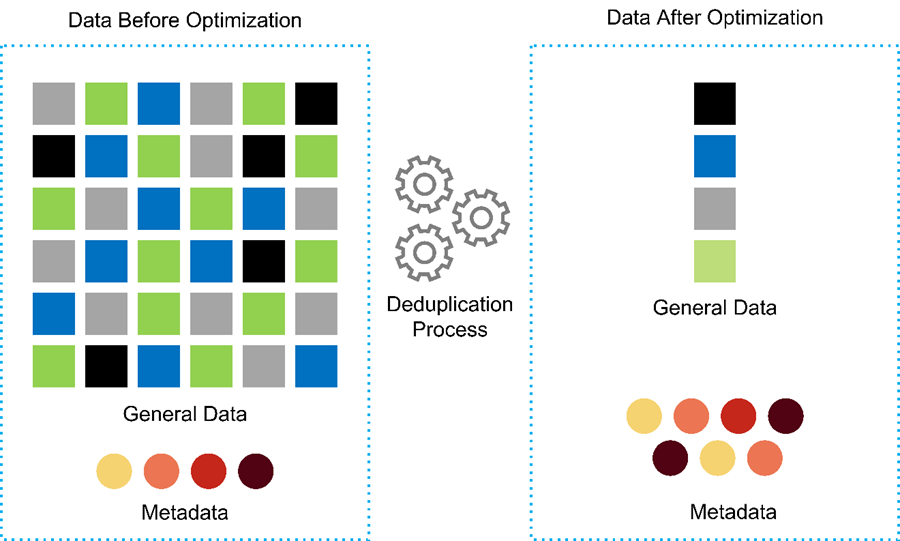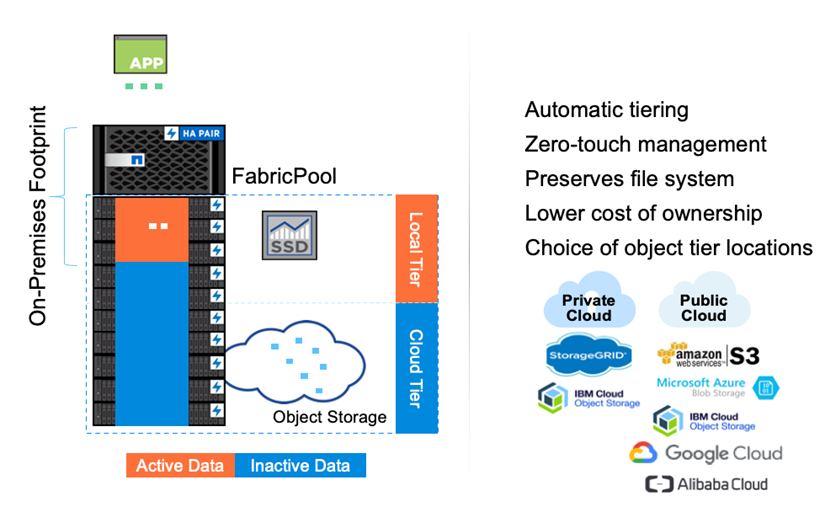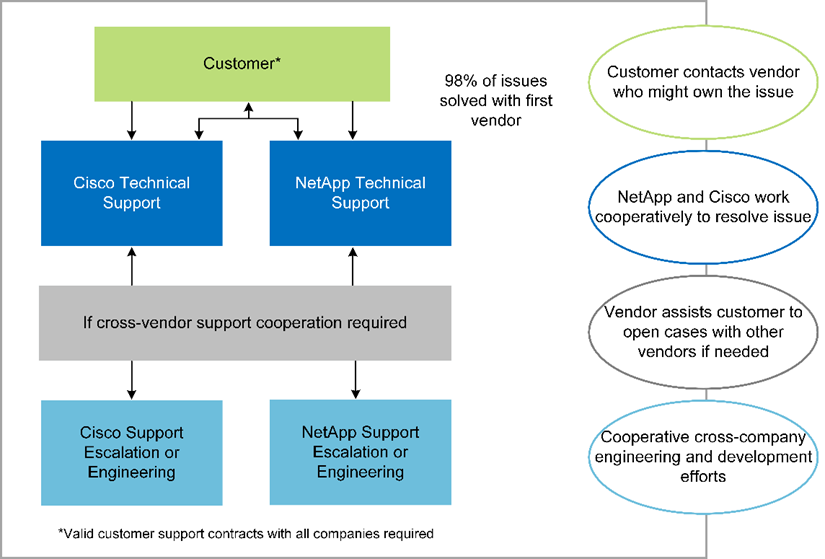Benefits of deploying genomic workloads on FlexPod
 Suggest changes
Suggest changes


This section provides a brief list of benefits for running a genomics workload on a FlexPod converged infrastructure platform. Let’s quickly describe the capabilities of a hospital. The following business architecture view shows a hospital’s capabilities deployed on a hybrid-cloud-ready FlexPod converged infrastructure platform.
-
Avoid siloes in healthcare. Silos in healthcare are a very real concern. Departments are often siloed into their own set of hardware and software not by choice but organically by evolution. For example, radiology, cardiology, EHR, genomics, analytics, revenue cycle, and other departments end up with their individual set of dedicated software and hardware. Healthcare organizations maintain a limited set of IT professionals to manage their hardware and software assets. The inflection point comes when this set of individuals are expected to manage a very diversified set of hardware and software. Heterogeneity is made worse by an incongruent set of processes brought to the healthcare organization by vendors.
-
Start small and grow. The GATK tool kit is tuned for CPU execution, which best suites platforms like FlexPod. FlexPod enables independent scalability of network, compute, and storage. Start small and scale as your genomics capabilities and the environment grows. Healthcare organizations don’t have to invest in specialized platforms to run genomic workloads. Instead, organizations can leverage versatile platforms like a FlexPod to run genomics and non-genomics workloads on the same platform. For example, if the pediatrics department wants to implement genomics capability, IT leadership can provision compute, storage, and networking on an existing FlexPod instance. As the genomics business unit grows, healthcare organization can scale their FlexPod platform as needed.
-
Single control pane and unparalleled flexibility. Cisco Intersight significantly simplifies IT operations by bridging applications with infrastructure, providing visibility and management from bare-metal servers and hypervisors to serverless applications, thereby reducing costs and mitigating risk. This unified SaaS platform uses a unified Open API design that natively integrates with third-party platforms and tools. Moreover, it allows management to occur from your data center operations team on site or from anywhere by using a mobile app.
Users quickly unlock tangible value in their environment by leveraging Intersight as their management platform. Enabling automation for many daily manual tasks, Intersight removes errors and simplifies your daily operations. Moreover, advanced support capabilities facilitated by Intersight allow adopters to stay ahead of problems and accelerate issue resolution. Taken in combination, organizations spend far less time and money on their application infrastructure and more time on their core business development.
Leveraging Intersight management and FlexPod’s easily scalable architecture enables organizations to run several genome workloads on a single FlexPod platform, increasing utilization and reducing total cost of ownership (TCO). FlexPod allows for flexible sizing, with choices starting with our small FlexPod Express and scaling into large FlexPod Datacenter implementations. With role-based access control capabilities built into Cisco Intersight, healthcare organizations can implement robust access control mechanisms, avoiding the need for separate infrastructure stacks. Multiple business units within the healthcare organization can leverage genomics as a key core competency.
Ultimately FlexPod helps simplify IT operations and lower operating costs, and it allows IT infrastructure admins to focus on tasks that help clinicians innovate rather than being relegated to keeping the lights on.
-
Validated design and guaranteed outcomes. FlexPod design and deployment guides are validated to be repeatable, and they cover comprehensive configuration details and industry best practices that are needed to deploy a FlexPod with confidence. Cisco and NetApp validated design guides, deployment guides, and architectures help your healthcare or life science organization remove guesswork from the implementation of a validated and trusted platform from the beginning. With FlexPod, you can speed up deployment times and reduce cost, complexity, and risk. FlexPod validated designs and deployment guides establish FlexPod as the ideal platform for a variety of genomics workloads.
-
Innovation and agility. FlexPod is recommended as an ideal platform by EHRs like Epic, Cerner, Meditech and imaging systems like Agfa, GE, Philips. For more information on Epic honor roll and target platform architecture, see the Epic userweb. Running genomics on FlexPod enables healthcare organizations to continue their journey of innovation with agility. With FlexPod, implementing organizational change comes naturally. When organizations standardize on a FlexPod platform, healthcare IT experts can provision their time, effort, and resources to innovate and thus be as agile as the ecosystem demands.
-
Data liberated. With the FlexPod converged infrastructure platform and a NetApp ONTAP storage system, genomics data can be made available and accessible using a wide variety of protocols at scale from a single platform. FlexPod with NetApp ONTAP offers a simple, intuitive, and powerful hybrid cloud platform. Your data fabric powered by NetApp ONTAP weaves data together across sites, beyond physical boundaries, and across applications. Your data fabric is built for data-driven enterprises in a data-centric world. Data is created and used in multiple locations, and it often needs to be leveraged and shared with other locations, applications, and infrastructures. Therefore, you need a consistent and integrated way to manage it. FlexPod puts your IT team in control and simplifies ever-increasing IT complexity.
-
Secure multitenancy. FlexPod uses FIPS 140-2 compliant cryptographic modules, hence enabling organizations to implement security as a foundational element, not an afterthought. FlexPod enables organizations implement secure multitenancy from a single converged infrastructure platform irrespective of the size of the platform. FlexPod with secured multitenancy and QoS help with workload separation and maximize utilization. This helps avoid capital being locked into specialized platforms that is potentially underutilized and requires a specialized skill set to manage.
-
Storage efficiency. Genomics requires that the underlying storage have industry- leading storage efficiency capabilities. You can reduce storage costs with NetApp storage efficiency features such as deduplication (inline and on demand), data compression, and data compaction ( ref). NetApp deduplication provides block-level deduplication in a FlexVol volume. Essentially, deduplication removes duplicate blocks, storing only unique blocks in the FlexVol volume. Deduplication works with a high degree of granularity and operates on the active file system of the FlexVol volume. The following figure shows an overview of how NetApp deduplication works. Deduplication is application transparent. Therefore, it can be used to deduplicate data originating from any application that uses the NetApp system. You can run volume deduplication as an inline process and as a background process. You can configure it to run automatically, to be scheduled, or to run manually through the CLI, NetApp ONTAP System Manager, or NetApp Active IQ Unified Manager.

-
Enable genomics interoperability. ONTAP FlexCache is a remote caching capability that simplifies file distribution, reduces WAN latency, and lowers WAN bandwidth costs, ( ref). One of the key activities during genomic variant identification and annotation is collaboration between clinicians. ONTAP FlexCache technology increases data throughput even when collaborating clinicians are in different geographic locations. Given the typical size of a *.BAM file (1GB to 100s of GB), it is critical that the underlying platform can make files available to clinicians in different geographic locations. FlexPod with ONTAP FlexCache makes genomic data and applications truly multisite ready, which makes collaboration between researchers located around the world seamless with low latency and high throughput. Healthcare organizations running genomics applications in a multisite setting can scale-out using the data fabric to balance manageability with cost and speed.
-
Intelligent use of storage platform. FlexPod with ONTAP auto-tiering and NetApp Fabric Pool technology simplifies data management. FabricPool helps reduce storage costs without compromising performance, efficiency, security, or protection. FabricPool is transparent to enterprise applications and capitalizes on cloud efficiencies by lowering storage TCO without the need to rearchitect the application infrastructure. FlexPod can benefit from the storage tiering capabilities of FabricPool to make more efficient use of ONTAP flash storage. For more information, see FlexPod with FabricPool. The following diagram provides a high-level overview of FabricPool and its benefits.

-
Faster variant analysis and annotation. The FlexPod platform is faster to deploy and operationalize. The FlexPod platform enables clinician collaboration by making data available at scale with low latency and increased throughput. Increased interoperability enables innovation. Healthcare organizations can run their genomic and non-genomic workloads side by side, which means organizations do not need specialized platforms to start their genomics journey.
FlexPod ONTAP routinely adds cutting edge features to the storage platform. FlexPod Datacenter is the optimal shared infrastructure foundation for deploying FC- NVMe to allow high-performance storage access to applications that need it. As FC- NVMe evolves to include high availability, multipathing, and additional operating system support, FlexPod is well suited as the platform of choice, providing the scalability and reliability needed to support these capabilities. ONTAP with faster I/O with end-to-end NVMe allows genomics analyses to completed faster ( ref).
Sequenced raw genome data produces large file sizes, and it is important that these files are made available to the variant analyzers to reduce the total time it takes from sample collection to variant annotation. NVMe (nonvolatile memory express) when used as a storage access and data transport protocol provides unprecedented levels of throughput and the fastest response times. FlexPod deploys the NVMe protocol while accessing flash storage via the PCI express bus (PCIe). PCIe enables implementation of tens of thousands of command queues, increasing parallelization and throughput. One single protocol from storage to memory makes data access fast.
-
Agility for clinical research from the ground up. Flexible, expandable storage capacity and performance allows the healthcare research organizations to optimize the environment in an elastic or just-in-time (JIT) manner. By decoupling storage from compute and network infrastructure, FlexPod platform can be scaled up and out without disruption. Using Cisco Intersight, the FlexPod platform can be managed with both built-in and custom automated workflows. Cisco Intersight workflows enable healthcare organizations to reduce application life-cycle management times. When an academic medical center requires that patient data be anonymized and made available to their center for research informatics and/or center for quality, their IT organization can leverage Cisco Intersight FlexPod workflows to take secure data backups, clone, and the restore in a matter of seconds, not hours. With NetApp Trident and Kubernetes, IT organizations can provision new data scientists and make clinical data available for model development in a matter of minutes, sometimes even in seconds.
-
Protecting genome data. NetApp SnapLock provides a special-purpose volume in which files can be stored and committed to a non-erasable, non-rewritable state. The user’s production data residing in a FlexVol volume can be mirrored or vaulted to a SnapLock volume through NetApp SnapMirror or SnapVault technology. The files in the SnapLock volume, the volume itself, and its hosting aggregate cannot be deleted until the end of the retention period. Using ONTAP FPolicy software organizations can prevent ransomware attacks by disallowing operations on files with specific extensions. An FPolicy event can be triggered for specific file operations. The event is tied to a policy, which calls out the engine it needs to use. You might configure a policy with a set of file extensions that could potentially contain ransomware. When a file with a disallowed extension tries to perform an unauthorized operation, FPolicy prevents that operation from executing (ref).
-
FlexPod Cooperative Support. NetApp and Cisco have established FlexPod Cooperative Support, a strong, scalable, and flexible support model to meet the unique support requirements of the FlexPod converged infrastructure. This model uses the combined experience, resources, and technical support expertise of NetApp and Cisco to offer a streamlined process for identifying and resolving FlexPod support issues, regardless of where the problem resides. The following figure provides an overview of the FlexPod Cooperative Support model. The customer contacts the vendor who might own the issue, and both Cisco and NetApp work cooperatively to resolve it. Cisco and NetApp have cross-company engineering and development teams that work hand in hand to resolve issues. This support model reduces loss of information during translation, enables trust, and reduces downtime.



